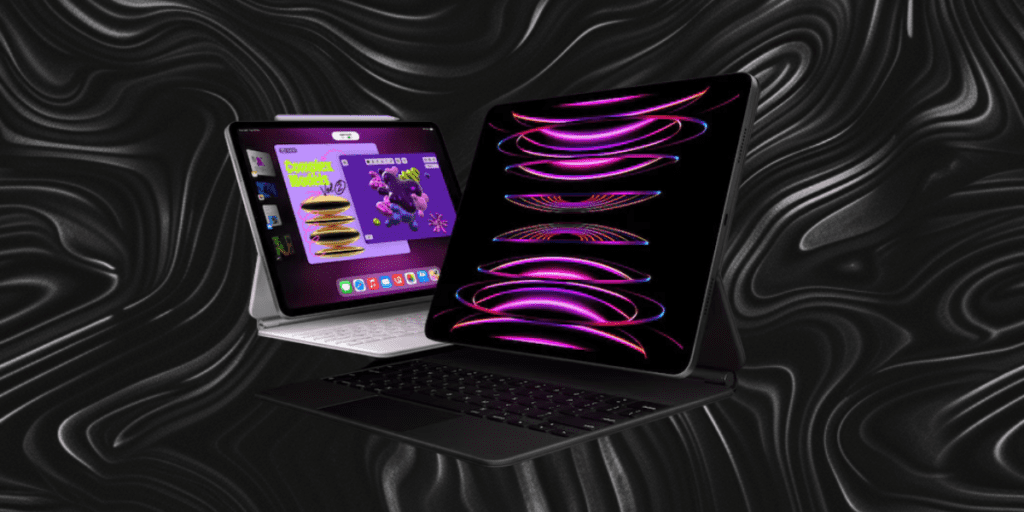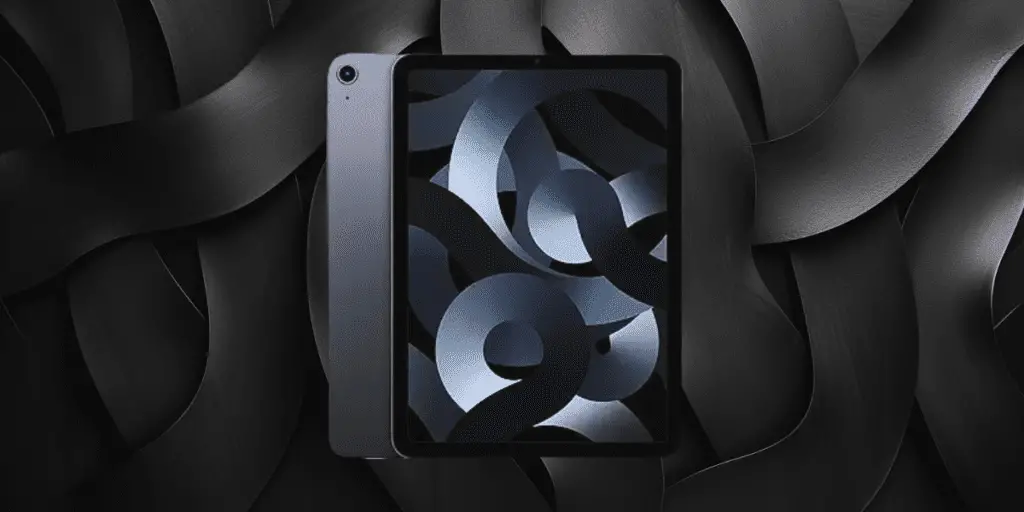Apple is reportedly gearing up to unveil its latest innovations in the tablet market with the launch of new iPad Pro and iPad Air models.
These releases, slated for the second week of May, are eagerly anticipated. They mark the end of a more than year-long hiatus since the last significant update to Apple’s iPad lineup.
With rumours of not just incremental upgrades but substantial improvements and new features, the tech community is buzzing with speculation and high expectations.
According to Bloomberg, potential buyers should brace for advanced display technologies, cutting-edge processors, and a price adjustment reflecting these enhancements.
As we inch closer to the unveiling, let’s explore what these new models could offer and how they might reshape the iPad experience for users worldwide.
iPad New Models and Features
The impending launch of Apple’s latest iteration promises to introduce groundbreaking advancements in hardware and display technology. Let’s delve into the specifics of what the new iPad Pro and iPad Air models are set to offer.
The new iPad Pro models are generating significant buzz for several reasons. Primarily, these models are expected to come in two sizes: an 11-inch version and a larger 13-inch variant. The highlight, however, is their OLED screens.
This marks a first for the iPad lineup, integrating a display technology renowned for its superior colour accuracy, contrast ratios, and ability to achieve true blacks. Such screens enhance visual fidelity and are also more energy-efficient, which could imply longer battery life.
Thanks to the ProRes technology, another notable feature is the support for a 120Hz refresh rate. This inclusion will likely appeal to gamers and professional users who demand smoother scrolling and more responsive touch inputs.
Whether for editing high-resolution videos or enjoying graphics-intensive games, the 120Hz refresh rate ensures a crisp and fluid experience.
Apple is set to broaden its iPad Air offering with a new 12.9-inch model with a traditional LCD panel. While it might not boast the OLED technology of its Pro counterparts, including an iPad Air model in this size is significant.
It offers users who prefer a more prominent display a more cost-effective alternative without compromising on the performance benefits of the lineup. Though specific details are sparse, a 60Hz refresh rate is expected, which remains adequate for various applications and media consumption.

First-Party Accessories
With the introduction of new models, Apple is enhancing the internal capabilities and display technologies of its flagship tablets and expanding its ecosystem with a suite of first-party accessories.
These additions enrich the user experience, providing functionality and style. Additionally, subtle yet impactful design changes are on the horizon, ensuring the new iPad Pro and iPad Air models stand out while maintaining the premium aesthetic Apple is known for.
Anticipation is high for the next iteration of the Apple Pencil. Expected improvements could include more precise pressure sensitivity, lower latency, and perhaps new features that leverage the new iPads’ hardware capabilities, enhancing productivity and creativity for artists, designers, and note-takers.
The Magic Keyboard has been a transformative accessory for users, effectively turning the tablet into a laptop alternative. The new version is rumoured to feature a larger trackpad, which would provide a more comfortable and efficient user experience, especially for tasks requiring precision, such as graphic design or text editing.
Alongside performance enhancements, protection and style remain priorities for iPad users. The upcoming folio cases are expected to safeguard the device and complement its design aesthetics. With potentially new materials or colours, these cases will cater to the tastes and preferences of a diverse customer base.
While they are anticipated to retain their metal unibody design, signifying durability and a premium feel, minor adjustments could set the new models apart from their predecessors. These changes, though not revolutionary, aim to refine the user experience and may include:
By reducing the bezel size, Apple could offer a more immersive viewing experience without increasing the devices’ overall footprint. This design tweak is especially beneficial for media consumption and professional applications like digital art and design.
Efforts to decrease the weight and optimize the ergonomics of the new iPads would make them more comfortable to hold for extended periods, an essential consideration for users who rely on their tablets for work, reading, or entertainment.
Technical Specifications
Apple’s forthcoming iPad Pro and iPad Air models are poised to redefine tablet performance and capabilities benchmarks. Central to this leap forward are the technical specifications underpinning these devices, which signal significant improvements in processing power, display technology, and user interaction.
The heart of the new iPad Pro models is the M3 chip, Apple’s latest advancement in its silicon lineup. Building on the architecture of its predecessors, the M3 chip promises even faster performance and greater energy efficiency.
This translates to smoother multitasking, more complex app capabilities, and extended battery life, all while efficiently handling power-intensive tasks.
OLED technology is making its debut in the iPad Pro, and users can expect unparalleled display quality. The OLED screens on the 11-inch and 13-inch models will offer vibrant colours, deep blacks, and higher contrast ratios.
Combined with a 120Hz refresh rate, the display is not just about visual appeal but also about fluidity and responsiveness, enhancing everything from gaming to professional design work.
The iPad Air improves by incorporating the M2 chip, which represents a significant performance boost over its predecessor.
While it might not be as advanced as the M3 chip in the iPad Pro models, the M2 is a powerhouse capable of handling demanding applications, high-resolution video editing, and graphic-intensive games without sweat.
The new 12.9-inch iPad Air is expected to feature a high-quality LCD panel. While it stays true to the traditional LCD technology, it’s anticipated to deliver excellent clarity, colour accuracy, and brightness levels suitable for various uses, from everyday browsing to immersive media viewing.
Both models will run on the latest version of iPadOS, offering a seamless and integrated experience with new multitasking features, enhanced security, and broader app compatibility.
Expect a range of storage configurations to suit various needs, from basic web browsing and email to high-end graphic design and video production.
Enhanced Wi-Fi and Bluetooth capabilities, alongside optional cellular models, ensure that iPad Pro and iPad Air users stay connected fast and reliably.

Pricing and Market Expectations
As Apple prepares to launch its latest iPad Pro and iPad Air models, the market speculates about the technological enhancements these devices will bring, their pricing, and their potential impact on consumer choices.
The anticipated price adjustments reflect the advanced features and costlier bills of materials associated with these new models. Here’s an exploration of what to expect regarding pricing and how it might shape market dynamics and consumer decisions.
With the introduction of OLED technology, the M3 chip, and other hardware improvements, the new iPad Pro models are expected to have a higher price tag than their predecessors. The starting price for the 11-inch model, currently $799, might increase by approximately $50 to $100.
The 13-inch model is also expected to witness a price hike within the same range. These adjustments account for the enhanced display technology and the inclusion of the more powerful, energy-efficient M3 chip.
While the new 12.9-inch iPad Air does not feature an OLED display, it is expected to be priced competitively, considering its use of the M2 chip and a high-quality LCD panel.
The pricing strategy for the iPad Air will likely bridge the gap between the standard iPad models and the more premium iPad Pro offerings, making it an attractive option for users seeking a large display and robust performance without the premium price tag of the Pro models.
The pricing of the new models will be crucial in consumer decision-making. Buyers must weigh the benefits of the latest technology advancements against the higher costs.
For instance, introducing the M3 chip in the iPad Pro models may justify the price hike for professionals and power users who demand top-tier performance and features. Meanwhile, with its M2 chip, the iPad Air presents a value proposition for those seeking a balance between performance and price.
Apple’s pricing strategy will also reflect its positioning against competitors. By offering a range of options from the more affordable iPad and iPad Air to the high-end iPad Pro, Apple aims to cater to a broad spectrum of users.
The pricing will need to be competitive enough to fend off challenges from other tablet manufacturers while underscoring Apple’s ecosystem’s premium value proposition. Introducing these new models at adjusted price points could have a long-term impact on the tablet market.
Higher prices might slow down the rate of upgrades among existing users. Still, they could also elevate the perceived value and desirability of owning the latest Apple tablet.

Final Thoughts
Apple’s latest iPad Pro and iPad Air models, the tech landscape stands at the cusp of a significant evolution. Apple’s consistent drive towards innovation is clearly reflected in the enhanced features, superior performance, and design aesthetics of these upcoming devices.
With OLED technology gracing the iPad Pro and the powerful M2 and M3 chips set to redefine what’s possible with tablet computing, Apple is not just releasing new products; it’s charting the future of digital interaction and creativity.
Introducing first-party accessories and design refinements further underscores Apple’s commitment to providing a holistic user experience that marries form with function.
These enhancements are not mere incremental updates but pivotal improvements that promise to elevate the user experience to new heights, making the iPad more indispensable to professionals, creatives, and casual users.
With innovation comes the question of cost. The anticipated price adjustments reflect the reality of advancing technology and its implications for manufacturing.
While the initial price tags may deter some, the value proposition of the latest iPad models—unparalleled performance, groundbreaking features, and ecosystem benefits—remains compelling.
Apple’s strategic pricing aims to cater to a broad spectrum of needs and preferences, ensuring an device for every type of user, from those seeking cutting-edge technology to those who prefer a balance of performance and affordability.
As the market adapts to these new offerings, consumer choices will undoubtedly shape the future trajectory of the tablet industry.
Apple’s latest models are not merely products but a testament to the company’s vision for the future—a future where technology continues to seamlessly integrate with and enhance every aspect of our lives.
In navigating the new horizons opened by Apple’s innovations, users are invited to redefine what’s possible, armed with devices that offer unprecedented power, versatility, and creative freedom.


